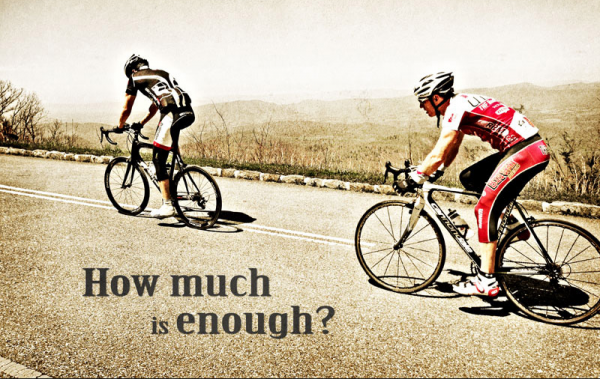Interval Training: Why It Works
 A number of athletes turn to interval training in order to improve their performance. Interval training involves periods of high-intensity riding that alternate with low-intensity rest periods. The purpose of interval workouts is to improve a cyclist’s speed/power as well as his or her level of endurance. Here is a look at precisely what interval training does and why it works.
A number of athletes turn to interval training in order to improve their performance. Interval training involves periods of high-intensity riding that alternate with low-intensity rest periods. The purpose of interval workouts is to improve a cyclist’s speed/power as well as his or her level of endurance. Here is a look at precisely what interval training does and why it works.
Cardiovascular fitness
The maximum rate at which oxygen is consumed by the body is known as VO2 max. VO2 max can be a measure of an athlete’s endurance. In theory, the higher a rider’s VO2 max is, the faster they can consume oxygen and the higher their endurance.
The most effective way to increase your VO2 max is to train at a level that reaches it. In other words, a high-intensity activity that has you breathing as hard as you can is going to be the kind of activity that increases your VO2 max, and thus your ability to sustain that level of exertion.
Interval training, with its repeated bursts of high-intensity level riding, is ideal for making your body more efficient at taking oxygen and delivering it to working muscles.
Lactate threshold
During high-intensity intervals, the body relies on glycogen for energy. As a result of glycogen being broken down, lactic acid, also known as lactate, accumulates in the muscles. During the low-intensity intervals, the heart and lungs work to metabolize the lactate.
By repeatedly producing lactic acid during high-intensity intervals, you are effectively teaching your body to deal with it more efficiently. This buildup of your lactate threshold allows you to ride faster for a longer period of time.
Additional benefits
Aside from helping a cyclist increase his or her endurance and build speed, interval training burns more calories than a regular workout. So, if you’re trying to lose weight, you might want to incorporate some interval training into your routine. As an added bonus, your body continues to burn calories at a higher rate long after your workout is complete.
You should always warm up before intervals and allow your heart rate to come down to about 100-110 bpm between high-intensity periods. Done correctly, interval training will add variety to your workout and improve your ability to ride faster and longer.